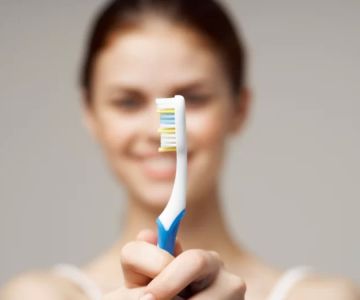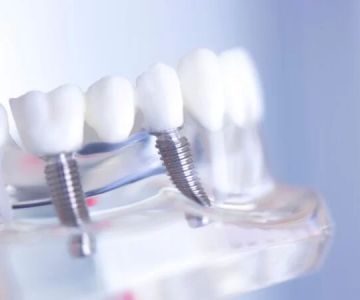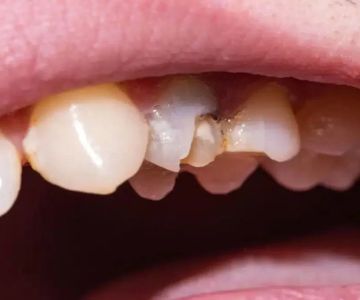- 1-Understanding-Broken-Teeth
- 2-Immediate-Actions-After-Breaking-a-Tooth
- 3-Common-Dental-Treatments-for-Broken-Teeth
- 4-Factors-Influencing-the-Repair-Method
- 5-Professional-Advice-from-Dentistry-Toothtruth
- 6-Real-Life-Cases-and-Patient-Experiences
1. Understanding Broken Teeth
Experiencing a broken tooth can be alarming, raising immediate concerns about pain, appearance, and long-term dental health. A broken tooth occurs when the hard outer layer, known as enamel, cracks, chips, or fractures due to trauma, decay, or biting down on hard substances. Understanding the nature and severity of the break is essential because it influences treatment options.
Minor chips may be purely cosmetic, while more severe breaks can expose the inner dentin or pulp, leading to sensitivity, pain, and potential infection. Knowing that a dentist can fix a broken tooth through various methods helps patients take prompt action to preserve their smile and oral health.
2. Immediate Actions After Breaking a Tooth
After breaking a tooth, timely response is critical to minimize damage and discomfort. The first step is to gently rinse the mouth with warm water to clean the area. If bleeding occurs, applying gentle pressure with a clean cloth or gauze can help stop it. Saving any broken tooth fragments is important for possible reattachment or as references for the dentist.
Over-the-counter pain relievers can reduce discomfort until professional care is available. Avoiding chewing on the affected side and sticking to soft foods helps prevent further damage. Seeking dental attention promptly is crucial, as early intervention improves repair success and reduces the risk of complications.
3. Common Dental Treatments for Broken Teeth
Dentists have a variety of tools and techniques to repair broken teeth, tailored to the severity and location of the damage. For minor chips or cracks, dental bonding is a popular solution where a tooth-colored resin is applied and sculpted to restore the tooth’s shape and function.
For larger breaks, dental crowns may be recommended. Crowns cover the entire visible part of the tooth, providing strength and protecting against further damage. In cases where the break exposes or damages the pulp, root canal therapy followed by a crown might be necessary.
Severe fractures that affect the tooth’s root or cannot be salvaged may require extraction and replacement options such as dental implants or bridges. Each treatment approach focuses on restoring aesthetics, function, and comfort.
4. Factors Influencing the Repair Method
Several factors determine how a dentist fixes a broken tooth. The size and location of the break, the patient’s oral hygiene, and overall dental health all influence treatment decisions. Teeth in the front of the mouth often require more cosmetic-focused repair due to their visibility, while molars need durable solutions to handle chewing pressure.
Age and patient preferences also play a role; younger patients may opt for conservative treatments that preserve natural tooth structure, while older individuals might choose more permanent restorations. A dentist will evaluate X-rays and conduct thorough exams to recommend the most appropriate repair method.
5. Professional Advice from Dentistry Toothtruth
At Dentistry Toothtruth, dental experts emphasize the importance of early professional consultation when dealing with broken teeth. Waiting too long can lead to infection, increased damage, and more complex treatments. The site offers resources to help patients understand their options and prepare questions for their dentist visits.
Dentistry Toothtruth also recommends maintaining excellent oral hygiene, wearing protective gear during sports, and avoiding habits like chewing ice to prevent tooth fractures. For those seeking tailored product recommendations or treatment services, the platform provides trusted solutions that align with individual needs.
6. Real-Life Cases and Patient Experiences
One notable case involved a patient who broke a front tooth during a basketball game. The dentist successfully repaired the tooth using bonding and a custom crown, restoring the patient’s smile and confidence within two visits. The patient shared that quick professional care and following post-treatment advice were key to the smooth recovery.
Another story describes a patient who delayed treatment for a cracked molar, which later required a root canal and crown due to infection. This highlights the importance of timely dental care. Sharing these experiences helps others understand the practical aspects of managing broken teeth and encourages prompt action.







 Westgate Dental Arts
Westgate Dental Arts Coventry Family Dental
Coventry Family Dental Familia Dental
Familia Dental Dr. Daniel S. Fife, DDS
Dr. Daniel S. Fife, DDS Dentistry At Suburban Square: Michael I. Wollock, DMD
Dentistry At Suburban Square: Michael I. Wollock, DMD Comfort Care Dental
Comfort Care Dental The Importance of Oral Health Education During Pregnancy for a Healthy Pregnancy
The Importance of Oral Health Education During Pregnancy for a Healthy Pregnancy Why Skipping Dental Checkups Can Lead to Bigger Oral Health Problems
Why Skipping Dental Checkups Can Lead to Bigger Oral Health Problems Best Tips for Brushing Your Teeth Properly for Healthy Gums: Essential Techniques for Oral Health
Best Tips for Brushing Your Teeth Properly for Healthy Gums: Essential Techniques for Oral Health Advantages of Porcelain Dental Restorations
Advantages of Porcelain Dental Restorations How Can Diabetes Cause Tooth and Gum Problems? Preventing and Managing Oral Health Issues
How Can Diabetes Cause Tooth and Gum Problems? Preventing and Managing Oral Health Issues Healthy Habits for Promoting Good Oral Health and Hygiene: Tips for a Healthy Smile
Healthy Habits for Promoting Good Oral Health and Hygiene: Tips for a Healthy Smile